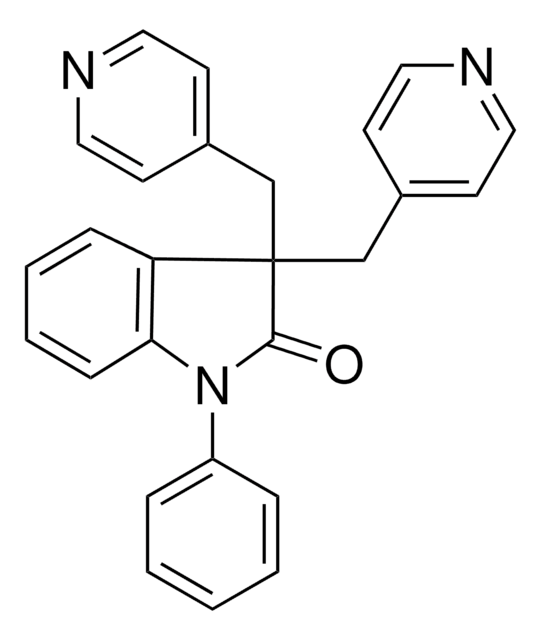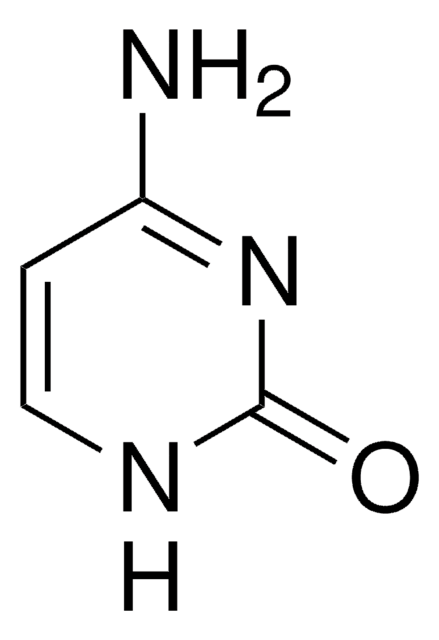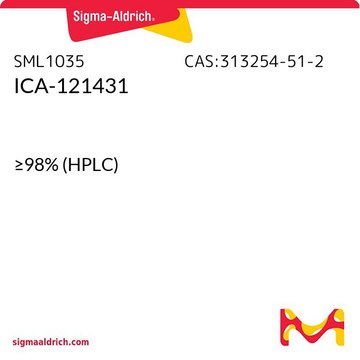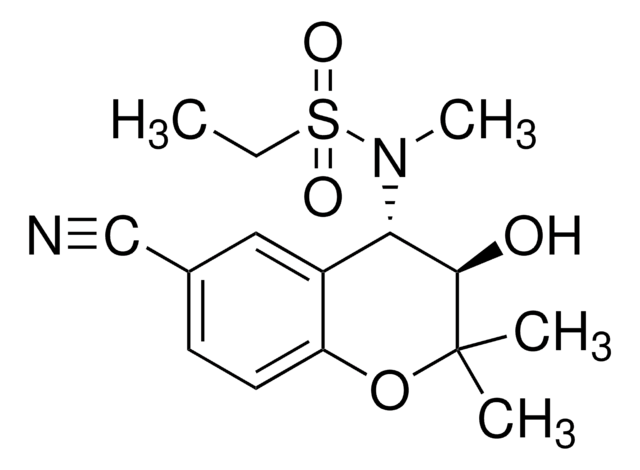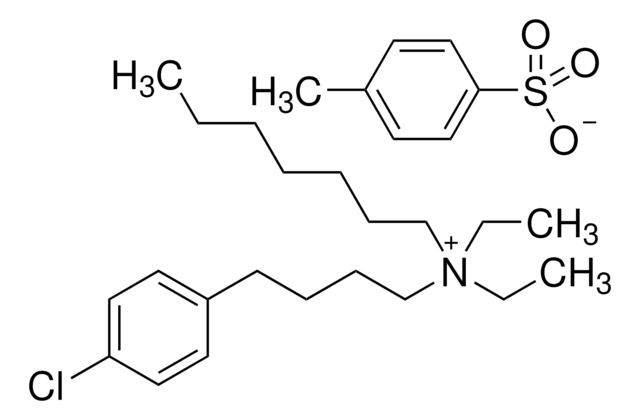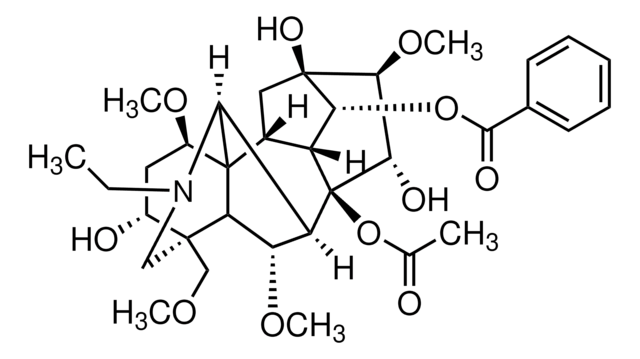X2254
XE-991
≥98% (HPLC), powder, KCNQ channel blocker
Sinónimos:
10,10-bis(4-pyridinylmethyl)-9(10H)-anthracenone
About This Item
Productos recomendados
Nombre del producto
XE-991, ≥98% (HPLC)
Quality Level
assay
≥98% (HPLC)
color
white to beige
solubility
DMSO: >20 mg/mL
originator
Merck & Co., Inc., Kenilworth, NJ, U.S.
storage temp.
2-8°C
SMILES string
O=C1c2ccccc2C(Cc3ccncc3)(Cc4ccncc4)c5ccccc15
InChI
1S/C26H20N2O/c29-25-21-5-1-3-7-23(21)26(17-19-9-13-27-14-10-19,18-20-11-15-28-16-12-20)24-8-4-2-6-22(24)25/h1-16H,17-18H2
InChI key
KHJFBUUFMUBONL-UHFFFAOYSA-N
Application
Biochem/physiol Actions
Features and Benefits
signalword
Warning
hcodes
Hazard Classifications
Eye Irrit. 2 - Skin Irrit. 2 - STOT SE 3
target_organs
Respiratory system
Storage Class
11 - Combustible Solids
wgk_germany
WGK 3
flash_point_f
Not applicable
flash_point_c
Not applicable
Elija entre una de las versiones más recientes:
¿Ya tiene este producto?
Encuentre la documentación para los productos que ha comprado recientemente en la Biblioteca de documentos.
Los clientes también vieron
Nuestro equipo de científicos tiene experiencia en todas las áreas de investigación: Ciencias de la vida, Ciencia de los materiales, Síntesis química, Cromatografía, Analítica y muchas otras.
Póngase en contacto con el Servicio técnico